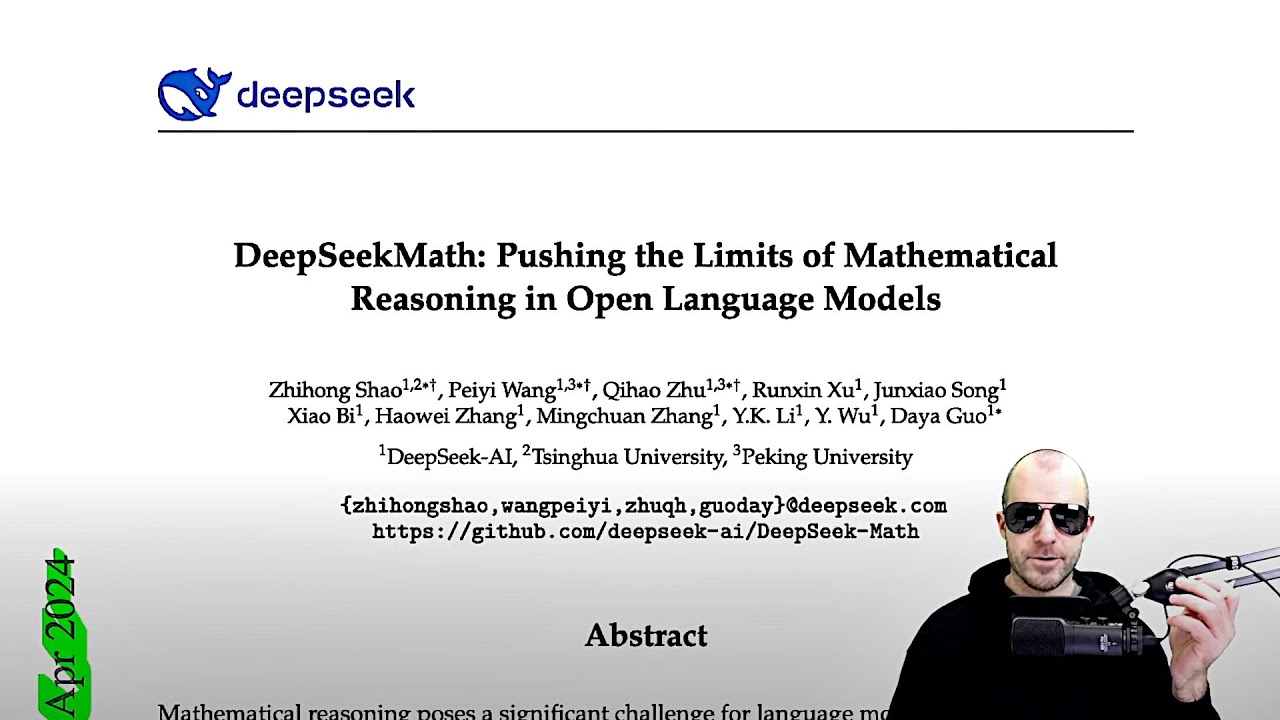The video explains the paper “DeepSeekMath,” which introduces the Group Relative Policy Optimization (GRPO) method to enhance mathematical reasoning in language models, specifically targeting high school-level math problems. The DeepSeek Math model, with 7 billion parameters, outperforms larger models like GPT-4 by utilizing a specialized dataset and a two-pronged training approach, raising questions about the future of AI and the limits of current pre-trained models.
DeepSeekMath: Pushing the Limits of Mathematical Reasoning in Open Language Models (Paper Explained)
The video discusses the paper “DeepSeekMath: Pushing the Limits of Mathematical Reasoning in Open Language Models,” which introduces a new approach called Group Relative Policy Optimization (GRPO) as part of DeepSeek’s R1 model. The paper, published on April 27, 2024, aims to enhance the mathematical reasoning capabilities of language models, specifically targeting high school-level math problems. The DeepSeek Math model, with 7 billion parameters, reportedly outperforms larger models like GPT-4 and Gemini Ultra in math benchmarks, showcasing the effectiveness of specialized training for specific tasks.
To achieve this performance, the authors collected a large dataset known as the DeepSeek Math Corpus, comprising 120 billion math tokens sourced from Common Crawl, a massive web data repository. The data collection process was iterative, starting with a small seed corpus and expanding it through a systematic classification and annotation process. This method allowed the researchers to identify and retain high-quality math-related content from a vast pool of internet data, demonstrating that relevant data can be extracted effectively from general web sources.
The training of the DeepSeek Math model involved a two-pronged approach: first, training a base language model on the collected math corpus, and then fine-tuning it with additional datasets. The model was initialized with a pre-trained code model, which was found to be beneficial for solving mathematical problems. The training process included various benchmarks to evaluate the model’s performance, revealing that the DeepSeek Math model significantly outperformed other models, including those specifically designed for math tasks.
The video also delves into the reinforcement learning aspect of the training process, particularly the GRPO method. GRPO is a variant of Proximal Policy Optimization (PPO) that eliminates the need for a separate value model, allowing for more efficient training. Instead of relying on a value model to estimate expected rewards, GRPO uses a group of observations to compute a normalized advantage, enhancing the model’s ability to learn from its outputs without the computational overhead of maintaining two separate models.
Finally, the video highlights the implications of the findings, suggesting that while reinforcement learning can enhance model performance, it primarily shapes the output distribution rather than fundamentally improving the model’s capabilities. This raises questions about the potential limits of current pre-trained models and the need for further advancements in base model architectures to achieve more significant breakthroughs in artificial general intelligence (AGI). The presenter encourages viewers to engage in discussions about such papers and their implications for the future of AI.
